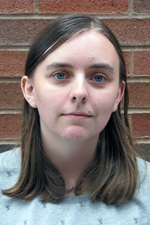News
GDSC Graduate Student Emily Berry Passes her Qualifying Exam!
Tuesday, July 27, 2021
 GDSC Graduate Student, Emily Berry successfully passed her qualifying exam. Last summer, Emily joined the lab of Stephano Spano Mello, Ph.D. Emily’s doctoral research project is titled “Defining the mechanisms underlying Neat1’sfunction in preserving pancreas cell identity”. Emily’s research abstract is sampled below.
GDSC Graduate Student, Emily Berry successfully passed her qualifying exam. Last summer, Emily joined the lab of Stephano Spano Mello, Ph.D. Emily’s doctoral research project is titled “Defining the mechanisms underlying Neat1’sfunction in preserving pancreas cell identity”. Emily’s research abstract is sampled below.
Congratulations Emily!
Abstract: Intraductal papillary mucinous neoplasms (IPMNs) are benign pancreatic lesions whose diagnosis has been increasing steadily over the last few years. IPMNs are slow-growing lesions originating from pancreatic duct cells. IPMNs can sometimes progress into invasive pancreatic ductal adenocarcinoma (PDAC), a deadly disease with poor patient survival. Therefore, IPMNs represent an opportunity to diagnose and treat a deadly disease before it advances to metastatic PDAC. Downregulation or mutation of protein subunits in the SWItch/Sucrose Nonfermentable (SWI/SNF) chromatin remodeling complex has been linked to IPMN formation, however the exact molecular mechanisms behind IPMN formation and malignant development are poorly understood. We recently showed that thep53-induciblelincRNA Nuclear Enriched Abundant Transcript 1 (Neat1) acts as a tumor suppressor in PDAC. We observed increased IPMN lesions in mouse models of PDAC lacking Neat1, similar to what was observed in SWI/SNF deficient mice. Additionally, a direct interaction between Neat1 and the SWI/SNF catalytic subunit BRG1 has been reported in some cell types. Based on these observations, we postulated that Neat1and SWI/SNF could be acting on the same path to suppress IPMN formation. My preliminary data show that loss ofNeat1leads to genome-wide changes in chromatin accessibility and SWI/SNF localization in both mouse embryonic fibroblast (MEFs) and in pancreatic lesion cells from mouse models of PDAC. I therefore hypothesize that Neat1 restricts IPMN formation by impacting SWI/SNF-dependent chromatin remodeling. To test this hypothesis, I propose to; 1) define the interaction between Neat1 and SWI/SNF in the pancreas, 2) determine how DNA accessibility and SWI/SNF localization on chromatin are impacted by loss of Neat1,and 3) determine which genes are differentially expressed upon the loss of Neat1, and how these genes may contribute to IPMN formation and malignancy. These experiments will illuminate the role of Neat1 and SWI/SNF in the formation of IPMN lesions.